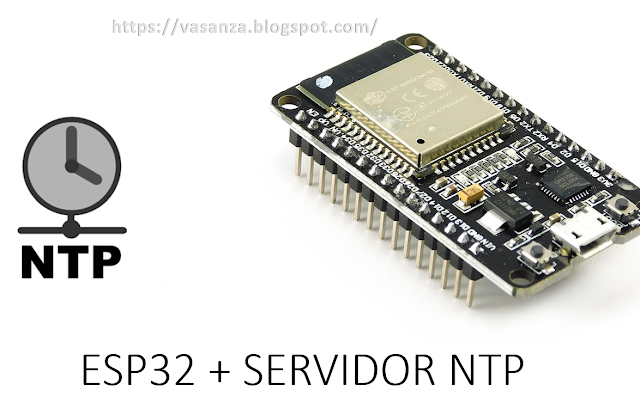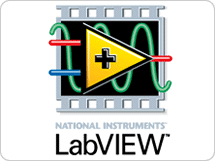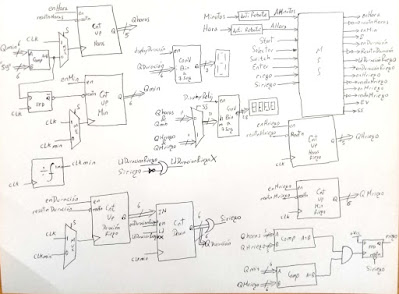▷ Newsletter: #FPGA (Field Programmable Gate Arrays)
⭐⭐⭐⭐⭐ Newsletter: #FPGA (Field Programmable Gate Arrays)
- ➡️ #DigitalSystems #DigitalElectronic #DigitalCircuits #HDL #VHDL #FPGA
- ⭐ https://github.com/VHDL-Digital-Systems
- ⭐ When using this resource, please cite the original publication:
FPGAs (Field-Programmable Gate Arrays) are programmable electronic devices that allow for the creation of customized digital circuits. Unlike ASICs (Application-Specific Integrated Circuits), which are integrated circuits specifically designed for one application, FPGAs can be programmed and reprogrammed to perform different tasks.
- ➡️ One of the most important advantages of FPGAs is their ability to implement soft processors, which are processors that are implemented in the FPGA using a hardware description language (HDL). Soft processors allow designers of integrated systems to create more complex and flexible systems than would be possible with conventional integrated circuits.
- ➡️ The importance of using soft processors in FPGAs lies in the ability to create highly customized integrated systems, tailored to specific user needs. Soft processors can be optimized for a specific task, which can significantly improve the performance and energy efficiency of the integrated system.
- ➡️ In addition, soft processors in FPGAs allow for greater flexibility in the design of the integrated system. For example, if an integrated system requires a processor with a specific processing capability, a designer can select a soft processor with the appropriate characteristics and customize it to the needs of the system.
- ➡️ Another important advantage of soft processors in FPGAs is their ability to adapt to changes in system requirements. If the integrated system needs to be modified or updated, the soft processor can be reprogrammed to adapt to the new requirements.
In summary, the implementation of soft processors in FPGAs is an important technique for the design of highly customized and efficient integrated systems. Soft processors allow for greater flexibility in the design of the system and can be optimized for a specific task, which significantly improves the performance and energy efficiency of the integrated system.
FPGAs are programmed with Hardware Description Language: Verilog or Very High-Speed Integrated Circuit Hardware Description Language (VHDL). In this video we will explain the VHDL hardware description language.
The design of digital systems is a complex task that requires a large number of specialized tools and programming languages. One of the most commonly used tools in this field is #VHDL, a hardware description language that allows design engineers to create hardware models and digital systems.
- ➡️ VHDL, which stands for "Very High-Speed Integrated Circuit Hardware Description Language," was developed in the 1980s by the United States Department of Defense as part of the VHSIC program. Since then, it has become an industry standard and is used worldwide for digital system design.
- ➡️ One of the main advantages of VHDL is its ability to describe complex systems in terms of smaller, simpler components. This allows digital system designers to build detailed and accurate models of the electronic circuits that will be used in the final system.
- ➡️ Another advantage of VHDL is that it is a very precise and structured language. This means that designers can specify exactly how individual components of the system should behave, resulting in a much more robust and reliable design.
- ➡️ Additionally, VHDL is a very flexible language that can be used for a wide variety of digital system design applications. It can be used for custom integrated circuit design, embedded systems, digital signal processing systems, hardware control systems, and much more.
- ➡️ Finally, VHDL is compatible with a wide variety of digital system design tools, making it easy to integrate the language into an existing design workflow. This means that design engineers can work with the tools they already know and use in their daily work.
In summary, VHDL is an essential tool for digital system design today. Its ability to describe complex systems in terms of simpler components, its precision and structure, its flexibility, and compatibility with a wide variety of design tools make VHDL an ideal choice for any digital system design project.
- ⭐APU, CPU, GPU e iGPU, ¿en qué se diferencian estos términos?
- ⭐ https://github.com/vasanza/MSI-VHDL
- Talks
- ➡️ Monitoring of system memory usage embedded in #FPGA
- ➡️ Clasificación de señales de #EEG con #NN en #FPGA
- Applications
- Publications
- ✅ FPGA Based Meteorological Monitoring Station
- ✅ Performance Comparison of Database Server based on #SoC #FPGA and #ARM Processor
- ✅ Monitoring of system memory usage embedded in #FPGA
- ✅ Behavioral Signal Processing with Machine Learning based on #FPGA
- ✅ Implementation of a Classification System of #EEG Signals Based on #FPGA
- International Competition
- ✅ #FPGA projects for Engineering Students
- Phrases recognition with Machine Learning #ML (InnovateFPGA)
- Example: Access control system (2)
- Example: Access control system (1)
- Sensor networks for #Agriculture
- #PID control for DC motor
- #PID control for angular position
- Writing letters through eye movement using Machine Learning #ML
- EyeTracker #Classification of subjects with Parkinson's using Machine Learning #ML
- #EEG + #FlexSensor Medical Equipments - #HTMC
- Digital synthesizer
- Microcontroller Architecture #PIC #16F877A
- Behavioral signal processing with Machine Learning #ML (Paper)
- Phrases recognition with Machine Learning #ML (InnovateFPGA)
- Alphabet letters recognition with #MachineLearning using #EMG signals (Paper)
- #EMG signal #Classification with #MachineLearning (Paper)
- #Epileptic disease clustering with #MachineLearning #ML
- #EEG signal processing with #MachineLearning #ML
- #EEG + #EMG signal processing with #MachineLearning #ML
- ✅ Video de #VHDL (Ejemplo 2 - secuencialidad)
- ✅ Video de #VHDL (Ejemplo 1 - concurrencia)













Comentarios
Publicar un comentario